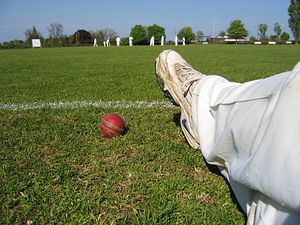Cricket is booming in Nepal and its recent gaining of One Day International (ODI) status demonstrates the cause. The emergence of three Twenty-20 (T20) victories has also fueled a momentum in the development of the sport, although challenges remain. The game found itself mired in controversies when the National Sports Council formed an ad hoc committee, bypassing the elections of the national cricket association two years ago. Subsequently, Nepal’s only governing body, the Cricket Association of Nepal (CAN), was suspended by the International Cricket Council (ICC) on April 25, 2016.
Not everything is in a gloomy state though. The growth in the game should be credited to the players above all. Nepali cricket is on the rise since the last decade sans proper administration or a stable paycheck. What amazes the Nepali fans is the sheer passion of the cricketers, who have put their futures at stake to take the game one step ahead.
But was it worth it to them? A large pool of players in the past had given up their game and left the country for better prospects elsewhere. Only a few were committed to the game and faced much hardship. The players can be applauded, but not the administration so far.
Rajan Shah, a sports journalist and creative director of Dhangadhi Premier League (DPL), notes:
A good domestic structure is absolute need of the hour. We are playing far too much T20 cricket with the growing commercialization of sports in the country, which is good in a way, but we need the Board to channel it for the overall development of cricket. T20 Cricket can only introduce you to a talent but overall technical, mental aspects of the game are developed through one-day or multi-day games. There is a reason only a few players survive for longer periods of time playing for the country. Others simply crash on the purple patch with bat or ball, but once the weakness is worked out by the opposition they tend to struggle.
On the other hand, corruption is a major blight for Nepal’s sports fraternity. Sports administrators have found themselves in the grip of power and money. After football, cricket has reaped a lot of fortune for the CAN and that’s exactly what blinded those in power. But now after repetitive pressure from the players and fans, those in positions of power are realizing that they can no longer dwell in their own greed. But can the authorities only take this game further?
On this, Shah adds, “The road ahead is simple. CAN should start functioning again with new strategies and ideas to further develop the cricket in Nepal. A 6-month or 9-month long cricket season is a must. Grounds like Mulpani, Fapla, Siddharth, Narayani, and now Pokhara should be developed at levels to at least host ICC U19 (Under-19) competitions.”
Nepal has an advantage since it is known worldwide as a beautiful country and the country’s only cricket ground, at Tribhuvan University, is a testament to that. The country is now building two more grounds in Mulpani, and planning to develop further stadiums in other regions of the nation. The problem, however, lies in the execution. It took more than 15 years for the government to settle the land issues of Mulpani and now an international stadium is being built in the area but progress is slow. However, there are other scenic views in Nepal that can draw a large number of cricket lovers, which will benefit both tourism and sports too.
Pokhara is another city, to the west of Kathmandu, that is the epitome of natural beauty and hosts a beautiful cricket ground. The stunning photos released by the recently concluded Pokhara Premier League (PPL) are simply breathtaking.
The recent trophy tour of ICC Cricket World Cup is a major boost to the nation and the game too. If Nepal can exploit this spirit then surely everyone will benefit. It won’t be surprising if future international cricket matches will be played in Nepal one day, where the stadiums will surely get fully packed.
Nepal’s most successful captain, Paras Khadka, time and again has noted that the game won’t progress in Nepal until and unless the government invests in infrastructure, domestic leagues, and commercializes the sports. He is considered as the iconic elder statesman of Nepali cricket, who the nation adores. And now Nepal has produced an 18-year-old rising star, Sandeep Lamichhane, who has become the global ambassador for Nepal cricket.
As Shah says, the “CAN suspension came in a very bad time but the blessing in disguise is we saw how much corporat[ions] are interested in cricket if given the platform or road to come and invest in cricket. It is an encouraging situation.”
“With a governing body, they can assure corporat[ions] of further long-term investment in the sports but then again [we] need new leadership of CAN when previous problems like fund distribution or lack of transparency in day-to-day operations should not be repeated.” He adds, “Nepali cricket has great future. We need some great statesman who can help to grow it, and need to identify them and give them responsibilities to take the sports as an identity of the nation which I am sure these statesmen can.”
Nepal is indeed making big strides in cricket, both locally and internationally, however, challenges remain. The CAN needs to be reinstated by the ICC in the coming months. And only then will the favorite South Asian game continue to grow in the Himalayan nation.
There’s a limit to how much ICC can do for Nepal cricket. On a positive note, the suspended CAN has withdrawn the writ petition filed at the Supreme Court against the NSC, paving way for ICC to annul the suspension. However, there’s more work to be done at home and quickly too. Or else the effort put by the players will go in vain and the fans will only cherish and dwell on the past.
Arun Budhathoki writes for StoriesAsia.

































